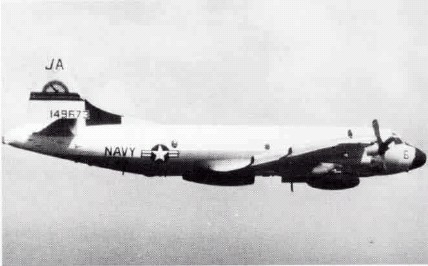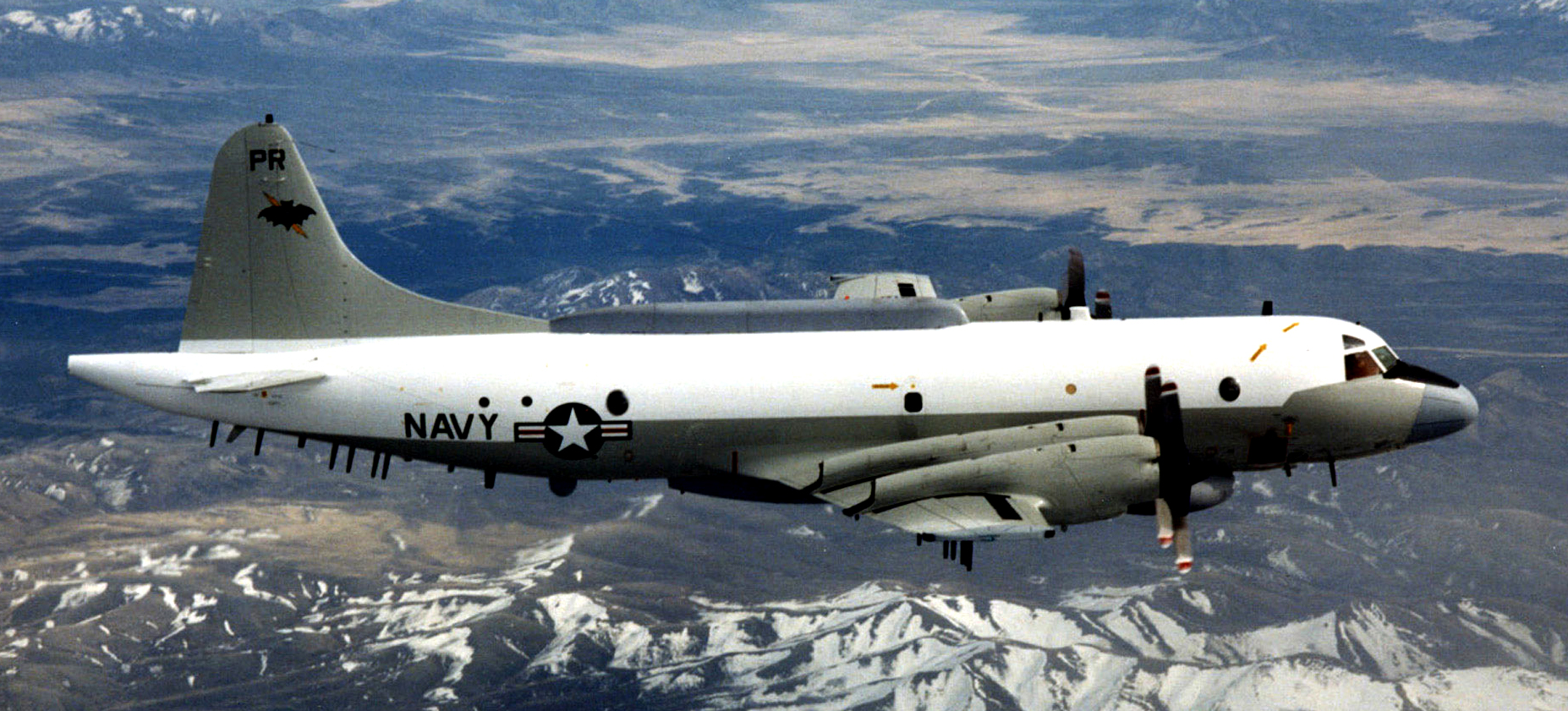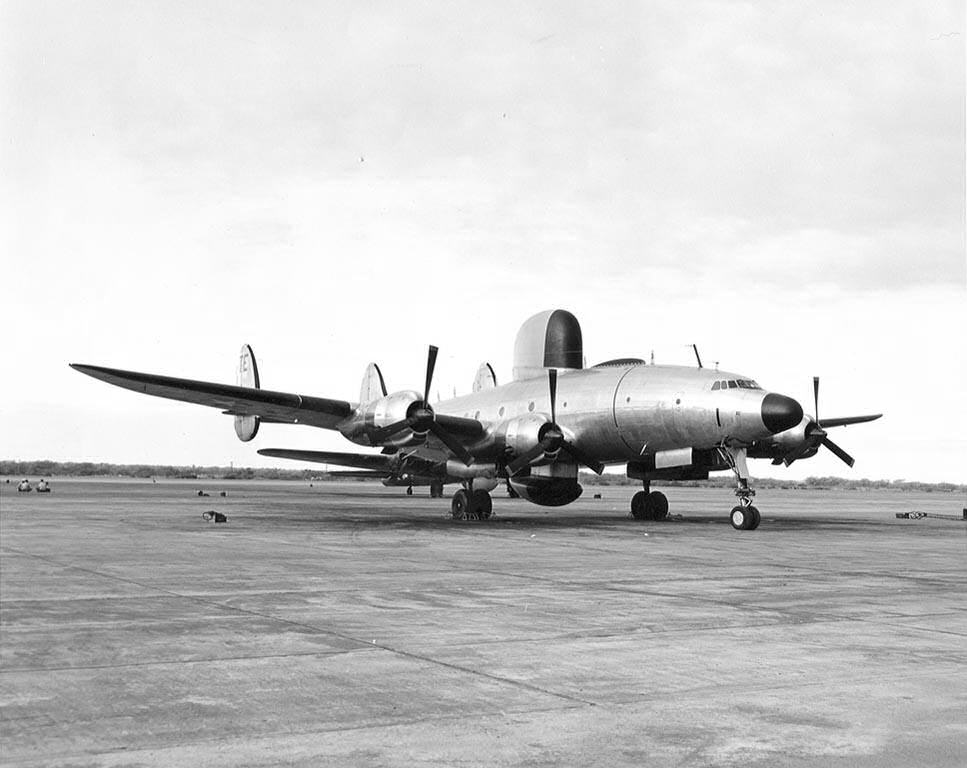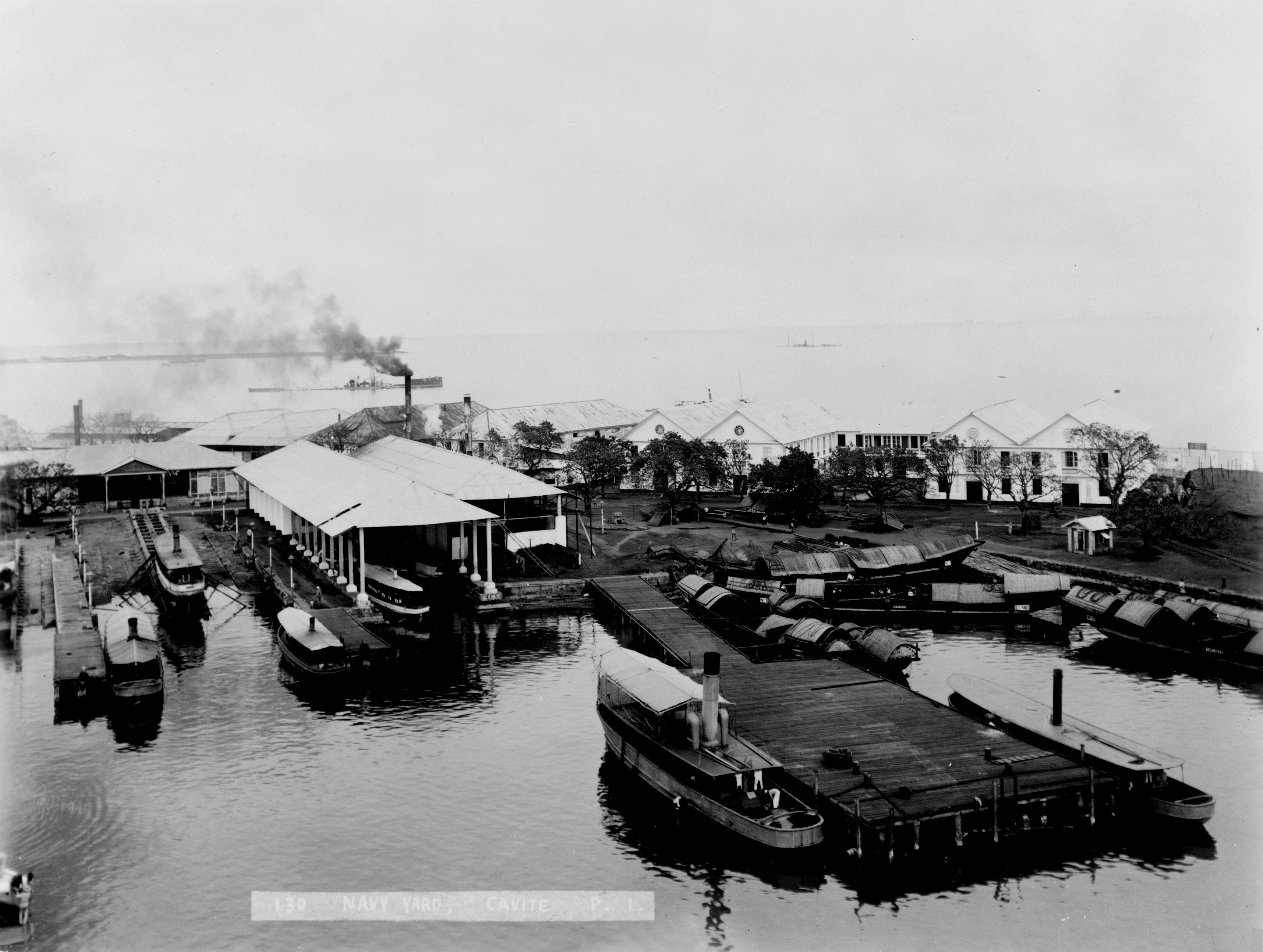|
VQ-1
Fleet Air Reconnaissance Squadron 1 (VQ-1) is an aviation unit of the United States Navy established on 1 June 1955. Its role is aerial reconnaissance and signals intelligence. The squadron is nicknamed the "World Watchers" and is based at NAS Whidbey Island, flying Lockheed EP-3E Aries II aircraft. Squadron History The lineage of VQ-1's "World Watchers" can be traced back to two PBY-5A Catalina "Black Cats" modified for electronic reconnaissance during World War II. The unit formally established as the Special Electronic Search Project at NAS Sangley Point, in October 1951. By 13 May 1953, when it was redesignated Detachment Able of Airborne Early Warning Squadron One (VW-1), the unit operated four P4M-1Q Mercators. 1950s When Detachment Able was reorganized into Electronic Countermeasures Squadron One (VQ-1) at Iwakuni, Japan on 1 June 1955, it was the first squadron dedicated to electronic warfare. The EA-3 Skywarrior served the squadron for the next three decades. 196 ... [...More Info...] [...Related Items...] OR: [Wikipedia] [Google] [Baidu] |
Douglas A-3 Skywarrior
The Douglas A-3 Skywarrior is a jet-powered strategic bomber that was developed and produced by the Douglas Aircraft Company. It was designed by Douglas on behalf of the United States Navy, which sought a carrier-capable strategic bomber. During July 1949, Douglas was awarded the contract to produce its design, having bested eight other aircraft companies' submissions. Unlike rival designs, which had aimed for a maximum take-off weight, the Skywarrior was developed for a take-off weight, facilitating its use from the navy's existing s. Large portions of the aircraft were produced by the Westinghouse Electric Corporation, including its early Westinghouse J40 turbojet engines, which failed to meet promises and were replaced by the rival Pratt & Whitney J57 engine by mid-1953. On 28 October 1952, the prototype ''XA3D-1'' performed the type's maiden flight. On 31 March 1956, the Skywarrior entered squadron service with the Navy. Initially used in the nuclear-armed strategic bomb ... [...More Info...] [...Related Items...] OR: [Wikipedia] [Google] [Baidu] |
A-3 Skywarrior
The Douglas A-3 Skywarrior is a jet-powered strategic bomber that was developed and produced by the Douglas Aircraft Company. It was designed by Douglas on behalf of the United States Navy, which sought a carrier-capable strategic bomber. During July 1949, Douglas was awarded the contract to produce its design, having bested eight other aircraft companies' submissions. Unlike rival designs, which had aimed for a maximum take-off weight, the Skywarrior was developed for a take-off weight, facilitating its use from the navy's existing s. Large portions of the aircraft were produced by the Westinghouse Electric Corporation, including its early Westinghouse J40 turbojet engines, which failed to meet promises and were replaced by the rival Pratt & Whitney J57 engine by mid-1953. On 28 October 1952, the prototype ''XA3D-1'' performed the type's maiden flight. On 31 March 1956, the Skywarrior entered squadron service with the Navy. Initially used in the nuclear-armed strategic bomb ... [...More Info...] [...Related Items...] OR: [Wikipedia] [Google] [Baidu] |
NAS Whidbey Island
Naval Air Station Whidbey Island (NASWI) is a naval air station of the United States Navy located on two pieces of land near Oak Harbor, on Whidbey Island, in Island County, Washington. The main portion of the base, Ault Field, is about three miles north of Oak Harbor. The other section, called the Seaplane Base for the PBY Catalina flying boats once based there, holds most of the island's Navy housing as well as the air station's main Navy Exchange and DeCA Commissary. The NASWI commanding officer also has command of a satellite airfield, Naval Outlying Landing Field (NOLF) Coupeville, on central Whidbey Island at , roughly nine miles south of Ault Field. Primarily used for Field Carrier Landing Practice (FCLP) by carrier-based jets, this field has no permanently assigned personnel. NASWI supports the MH-60S Seahawk helicopter and the EA-18G Growler, P-8 Poseidon, EP-3E ARIES, and C-40 Clipper fixed-wing aircraft. History 1940s On 17 January 1941, almost 11 months ... [...More Info...] [...Related Items...] OR: [Wikipedia] [Google] [Baidu] |
Naval Air Station Whidbey Island
Naval Air Station Whidbey Island (NASWI) is a naval air station of the United States Navy located on two pieces of land near Oak Harbor, Washington, Oak Harbor, on Whidbey Island, in Island County, Washington (state), Washington. The main portion of the base, Ault Field, is about three miles north of Oak Harbor. The other section, called the Seaplane Base for the PBY Catalina flying boats once based there, holds most of the island's Navy housing as well as the air station's main Navy Exchange and Defense Commissary Agency, DeCA Commissary. The NASWI commanding officer also has command of a satellite airfield, Naval Outlying Landing Field Coupeville, Naval Outlying Landing Field (NOLF) Coupeville, on central Whidbey Island at , roughly nine miles south of Ault Field. Primarily used for Field Carrier Landing Practice (FCLP) by carrier-based jets, this field has no permanently assigned personnel. NASWI supports the SH-60 Seahawk, MH-60S Seahawk helicopter and the EA-18G Growler ... [...More Info...] [...Related Items...] OR: [Wikipedia] [Google] [Baidu] |
Lockheed EP-3
The Lockheed EP-3 is an electronic signals reconnaissance variant of the P-3 Orion, operated by the United States Navy. Development A total of 12 P-3C aircraft were converted to replace older versions of the aircraft, which had been converted in the late 1960s and early 1970s. The aircraft is known by the acronym ARIES, or "Airborne Reconnaissance Integrated Electronic System". and has Signals intelligence (SIGINT) capabilities. SIGINT is the interception of signals, whether communications between people (communications intelligence—abbreviated to COMINT) or from electronic signals not directly used in communication (electronic intelligence—abbreviated to ELINT). The EP-3E generally has a crew of 24, including linguists, cryptographers and technicians. The squadrons that flew the EP-3E also flew the Lockheed EC-121 Warning Star from 1962 to 1974 and the Douglas EA-3B Skywarrior from 1960 to 1991. There are 11 EP-3Es in the Navy's inventory, the last of which was deliver ... [...More Info...] [...Related Items...] OR: [Wikipedia] [Google] [Baidu] |
Hainan Island Incident
The Hainan Island incident occurred on April 1, 2001, when a United States Navy EP-3E ARIES II signals intelligence aircraft and a People's Liberation Army Navy (PLAN) J-8II interceptor fighter jet collided in mid-air, resulting in an international dispute between the United States and the People's Republic of China (PRC). The EP-3 was operating about away from the PRC island province of Hainan, as well as about away from the China military installation in the Paracel Islands, when it was intercepted by two J-8 fighters. A collision between the EP-3 and one of the J-8s caused a PRC pilot to go missing (later presumed dead); the EP-3 was forced to make an emergency landing on Hainan. The 24 crew members were detained and interrogated by the China authorities until a statement was delivered by the United States government regarding the incident. The exact phrasing of this document was intentionally ambiguous and allowed both countries to save face while defusing a potentially ... [...More Info...] [...Related Items...] OR: [Wikipedia] [Google] [Baidu] |
Lockheed EC-121 Warning Star
The Lockheed EC-121 Warning Star was an American airborne early warning and control radar surveillance aircraft operational in the 1950s in both the United States Navy (USN) and United States Air Force (USAF). The military version of the Lockheed L-1049 Super Constellation was used to serve as an airborne early warning system to supplement the Distant Early Warning Line, using two large radomes (a vertical dome above and a horizontal one below the fuselage). It replaced the TBM-3W used by the USN. Some EC-121s were also used for signal intelligence gathering. The EC-121 was introduced in 1954 and phased out in 1978, although a single specially modified EW aircraft remained in USN service until 1982. The USN versions when initially procured were designated WV-1 (PO-1W), WV-2, and WV-3. The USAF Warning Stars served during the Vietnam War both as electronic sensor monitors and as a forerunner to the Boeing E-3 Sentry AWACS. USAF aircrews adopted its civil nickname, "Connie" ( ... [...More Info...] [...Related Items...] OR: [Wikipedia] [Google] [Baidu] |
Martin P4M Mercator
The Martin P4M Mercator was a maritime reconnaissance aircraft built by the Glenn L. Martin Company. The Mercator was an unsuccessful contender for a United States Navy requirement for a long-range maritime patrol bomber, with the Lockheed P2V Neptune chosen instead. It saw a limited life as a long-range electronic reconnaissance aircraft. Its most unusual feature was that it was powered by a combination of piston engines and turbojets, the latter being in the rear of the engine nacelles. Design and development Work began on the Model 219 in 1944, as a replacement for the PB4Y Privateer long-range patrol bomber, optimised for long range minelaying missions, with the first flight being on 20 October 1946.Lake and Dorr 2000, p.139. A large and complicated aircraft, it was powered by two Pratt & Whitney R4360 Wasp Major 28-cylinder radial engines. To give a boost during takeoff and combat, two Allison J33 turbojets were fitted in the rear of the two enlarged engine nacelles, the i ... [...More Info...] [...Related Items...] OR: [Wikipedia] [Google] [Baidu] |
Navy Unit Commendation
The Navy Unit Commendation (NUC) is a United States Navy unit award that was established by order of the Secretary of the Navy James Forrestal on 18 December 1944. History Navy and U.S. Marine Corps commands may recommend any Navy or Marine Corps unit for the NUC that has distinguished itself by outstanding heroism in action against the enemy, but not sufficient to justify the award of the Presidential Unit Citation. A unit must have performed service of a character comparable to that which would merit the award of a Silver Star Medal for heroism, or a Legion of Merit for non-combat meritorious service to an individual. Normal performance of duty or participation in many combat missions does not, in itself, justify the award. An award will not be made to a unit for actions of one or more of its component parts, unless the unit performed uniformly as a team, in a manner justifying collective recognition. U.S. Army, U.S. Air Force, and U.S Coast Guard units are also eligible to ... [...More Info...] [...Related Items...] OR: [Wikipedia] [Google] [Baidu] |
Naval Station Sangley Point
Naval Station Sangley Point was a communication and hospital facility of the United States Navy which occupied the northern portion of the Cavite City peninsula and is surrounded by Manila Bay, approximately eight miles southwest of Manila, the Philippines. The station was a part of the Cavite Navy Yard across the peninsula. The naval station had a runway that was built after World War II, which was used by U.S. Navy Lockheed P-2 Neptune, Lockheed P-3 Orion, and Martin P4M Mercator maritime patrol and anti-submarine warfare aircraft. An adjacent seaplane runway, ramp area and seaplane tender berths also supported Martin P5M Marlin maritime patrol aircraft until that type's retirement from active naval service in the late 1960s. NAS Sangley Point/NAVSTA Sangley Point was also used extensively during the Vietnam War, primarily for U.S. Navy patrol squadrons forward deployed from the United States on six-month rotations. The naval station was turned over to the Philippine govern ... [...More Info...] [...Related Items...] OR: [Wikipedia] [Google] [Baidu] |
Da Nang
Nang or DanangSee also Danang Dragons ( ; vi, Đà Nẵng, ) is a class-1 municipality and the fifth-largest city in Vietnam by municipal population. It lies on the coast of the East Sea of Vietnam at the mouth of the Hàn River, and is one of Vietnam's most important port cities. As one of the country's five direct-controlled municipalities, it falls under the administration of the central government. Da Nang is the commercial and educational centre of Central Vietnam and is the largest city in the region. It has a well-sheltered, easily accessible port, and its location on National Route 1 and the North–South Railway makes it a transport hub. It is within of several UNESCO World Heritage Sites, including the Imperial City of Huế, the Old Town of Hội An, and the Mỹ Sơn ruins. The city was known as during early Đại Việt settlement, and as (or ''Turon'') during French colonial rule. Before 1997, the city was part of Quang Nam - Da Nang Province. On 1 Janua ... [...More Info...] [...Related Items...] OR: [Wikipedia] [Google] [Baidu] |
Naval Air Station Cubi Point
U.S. Naval Air Station Cubi Point was a United States Navy aerial facility located at the edge of Naval Base Subic Bay and abutting the Bataan Peninsula in the Philippines. When the base closed, the air station became the Subic Bay International Airport and is still operating today. Background During the Korean War, Admiral Arthur W. Radford, Chief of Naval Operations saw the need for a naval air station at Cubi Point. It was a rugged and jungle-covered finger of land from Subic Naval Base. Radford believed the air station would be a vital link for the U.S. Navy in the Philippines. In spite of the magnitude of the job and the tremendous difficulties the construction involved, the project was approved by The Pentagon. Civilian contractors were initially contracted to fulfill the project, but after seeing the forbidding Zambales Mountains and the maze of jungle at Cubi Point, they claimed it could not be done. The Navy's Seabees were then given the project in 1951. The first ... [...More Info...] [...Related Items...] OR: [Wikipedia] [Google] [Baidu] |










